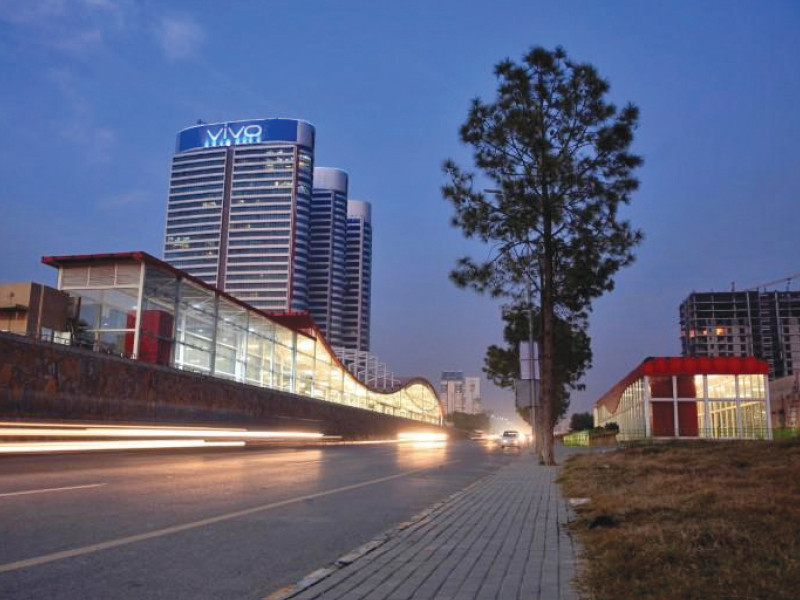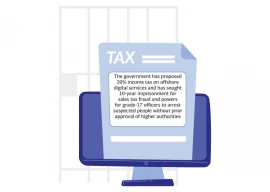
Events in Bangladesh (formerly East Pakistan) have caught the attention of global and local audience. What started as a trivial protest over job quotas among students snowballed into tensions leading to unfortunate riots, fatalities and eventual ouster of Prime Minister Sheikh Hasina Wajid, who held the reins for 20 years as leader of the country and daughter of the founding father. This surely has lessons for many emerging and frontier economies such as Pakistan.
Compared to Pakistan's negligible GDP per capita of $1,500, Bangladesh flaunts an impressive $2,400 GDP per capita, as high as India's. Growing sustainably at 5-6% per annum, Bangladesh is on track to migrate from the UN's Least Developed Country (LDC) status in 2026 to the upper middle-income status by 2031.
Funnily enough, one taka can buy more than two Pakistani rupees, buoyed by the sustained growth in exports, foreign exchange reserves and moderate government debt.
Compared to Pakistan's whopping 70% government debt-to-GDP ratio, Bangladesh sits comfortably at a 40% ratio. The story is not different when comparing Pakistan's mind-boggling 19.5% interest rate vs Bangladesh's 8.5% rate.
The question is can the government still be toppled with such good economic indicators? Wouldn't there be a sense of security and comfort among incumbent rulers overseeing such great rates of economic growth only to be shocked to flee the country within a few days.
Without dwelling into conspiracy theories, countries such as Pakistan must draw lessons from the economic journey. The GDP growth and other ballpark macroeconomic numbers show the overall story but only superficially.
Discontent in population could definitely arise due to the widening levels of income inequality. While top elite of the country can see their wealth grow multiple times than the overall GDP growth, the middle income and the poorest move at a snail's pace, struggling to maintain the inflation-adjusted growth.
The best case example would be if the economy has grown by 5% per year in a decade, the lower-income people's real growth should be 6-15% per year vs the elite's growth rate of 1-5%. Invariably, growth in the lower strata of society translates into a higher economic growth due to the high marginal propensity to consume.
In Pakistan's case as well, the GDP growth of 3-4% over next few years is alarmingly less to quash public dissent over worsening real incomes. While notable efforts are being made to keep the currency stable, get IMF bailout, enact tough reforms, attract FDI through the Special Investment Facilitation Council (SIFC) and increase tax-to-GDP ratio, much more is needed.
For instance, an industry should be offered competitive energy rates and tax rates should be adjusted for every job created or salaries paid. The idea is to discourage capitalists to park their wealth in real estate, plots or bank deposits and only earn real inflation-adjusted income by creating jobs for middle- and lower-income families.
If the rate of increase in purchasing power of the lower to middle class is higher than the upper and elite class, invariably it will lead to better social spending, higher tax revenues, increased economic activity, improved entrepreneurial spirits, increased domestic consumption, foreign investment catering to domestic demand, a talented labour pool, lesser brain drain and overall pleasure with policymakers.
For that to happen, those at the helm of affairs should work actively with capitalists, industrialists, entrepreneurs, rich families, banks, the central bank, tax authorities, utility companies, universities and other pillars of society to extend help (even discriminating against other sectors) for creating jobs in export, value addition and import-substituting industries.
We often give the example of Chinese miracle lifting hundreds of millions out of poverty. That should not be the goal and the benchmark must be set much higher.
In China, there are more than 6 million people having net worth of more than $1 million and these have all grown organically in the last few decades owing to the rising lower and middle income.
Pakistani policymakers should also not just focus on increasing Benazir Income Support Programme (BISP) allowances and keeping inflation in single digits to lift people out of poverty for unsustainable three to four years of growth but democratising wealth to masses lower in the pyramid to see real progress and become an exemplary country.
Bangladesh with its economic prowess could afford short-term political uncertainty, but Pakistan has miles to go to utilise its untapped human resources. Start with educating masses and handing power and income back to the bottom and see the magic.
The writer is an independent economic analyst

1737537702-0/fizza-(79)1737537702-0-405x300.webp)


1737532984-0/BeFunky-collage-(18)1737532984-0-165x106.webp)








1737452260-0/Gaddafi-stadium-(2)1737452260-0-270x192.webp)










COMMENTS
Comments are moderated and generally will be posted if they are on-topic and not abusive.
For more information, please see our Comments FAQ